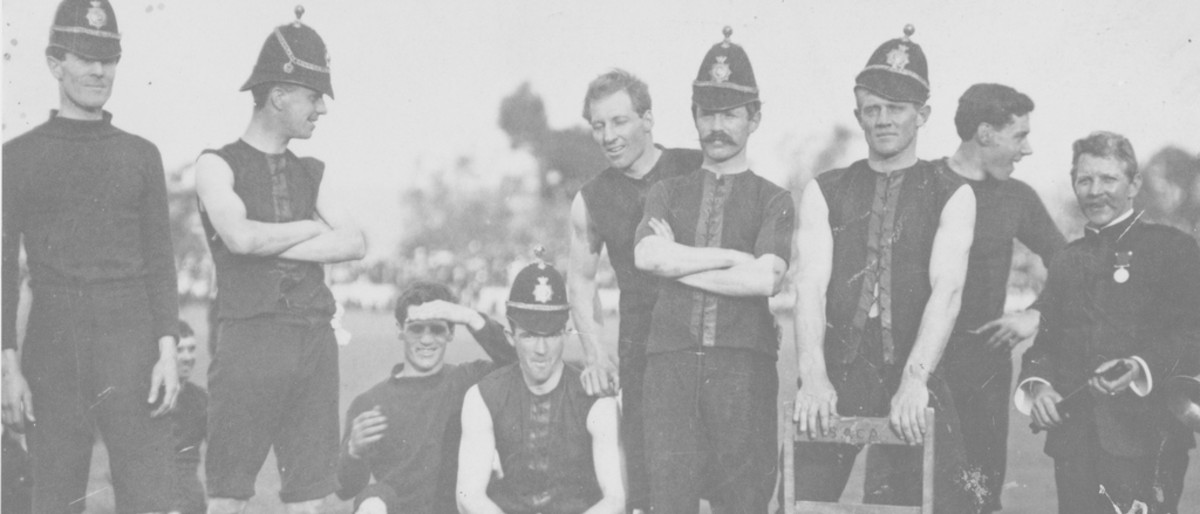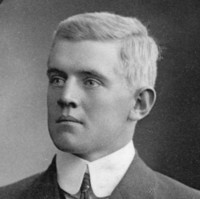Person
ContributeAn outstanding work ethic drove Essington Lewis to devote his whole life to developing industry in Australia, in particular the Broken Hill Proprietary Company. For many years he had on his wall a framed text which read: ‘I AM WORK.’
He was born at Burra on 13th January 1881, the third son of stock and station agent John Lewis and his wife Martha Anne (née Brook). He was educated at the Burra school and at St. Peter’s College, Adelaide. He was, like his father, a man of powerful physique and great mental determination, and he excelled at many sports, including polo, tennis and football (in which he later represented both Norwood and South Australia). After training at the South Australian School of Mines and Industries, he began a lifetime of work with B.H.P. in January 1904, first underground at Broken Hill for a few shillings a day and then in the smelters at Port Pirie. On 12th April 1910 he married Gladys Rosalind Cowan and they were to have five children.
When Guillaume Delprat, the legendary Manager of B.H.P., took the company into steel production at Newcastle in 1913, Lewis was given the task of expanding the output of ore at Iron Knob. His exceptional organizing ability and efficient manage-ment style (assisted by a series of meticulously detailed pocket notebooks) encouraged Delprat to bring him to head office in Melbourne. He lived there from 1915 while frequently inspecting work sites throughout Australia.
After travelling overseas with Director Harold Darling in 1920, he succeeded Delprat as General Manager the following year. Demand for steel fell after World War I and when Darling became Chairman in 1922, he and Lewis began a powerful long-term partnership and a close friendship. Lewis’ forthrightness, his attention to detail and his personal involvement in all aspects of the business resulted in improved efficiency and reduced costs. In 1926 he was appointed Managing Director and every few years he went overseas, learning the latest techniques. He also sent his senior employees abroad, initiated comprehensive staff training schemes and encouraged overseas companies to establish subsidiaries in Australia using B.H.P. steel. These improvements, as well as the merger with Australian Iron and Steel at Port Kembla, enabled the steel industry to survive the Depression.
When in 1934 the Japanese were reluctant to show him their steelworks, Lewis foresaw that Australia must prepare for war. With W.S. Robinson, he founded the Commonwealth Aircraft Corporation, encouraged a string of aero clubs to train pilots, and established munitions annexes at the steelworks. He urged government and industry to prepare and when war came he served first as business consultant to the Department of Defence and, from May 1940, as Director-General of Munitions, appointed by the Prime Minister, Robert Menzies. As chairman of a large committee of leading businessmen and Defence Department staff, he wielded enormous power over everything essential to the war effort. Some Labor leaders objected but when Curtin succeeded Menzies he widened Lewis’ powers to include aircraft production. With war ending, Lewis again went overseas to inspect plants and attract new industries, establishing the steelworks and shipyards at Whyalla and assisting with the long-range weapons project at Salisbury and Woomera, and the production of the Holden car.
Generous to deserving causes, Lewis abhorred idleness, shunned publicity and had a fetish for punctuality, discipline and efficiency. His insistence on dominating every situation could sometimes produce an overbearing aggressiveness. Many honours were awarded him, including the Companion of Honour which he reluctantly accepted in September 1943.
At ‘Landscape’, his lovely property north of Melbourne, family, friends and colleagues were always welcome. It was here that Essington Lewis died on 2nd October 1961 after suffering a heart attack while horse-riding. He was cremated at Springvale Crematorium, Melbourne.
Media
Add mediaImages

Image courtesy of the State Library of South Australia, SLSA: PRG 247/83/3, http://collections.slsa.sa.gov.au/resource/PRG+247/83/3, Public Domain

Image courtesy of the State Library of South Australia, SLSA: PRG 247/83/2, http://collections.slsa.sa.gov.au/resource/PRG+247/83/2, Public Domain


CommentAdd new comment
Quickly, it's still quiet here; be the first to have your say!